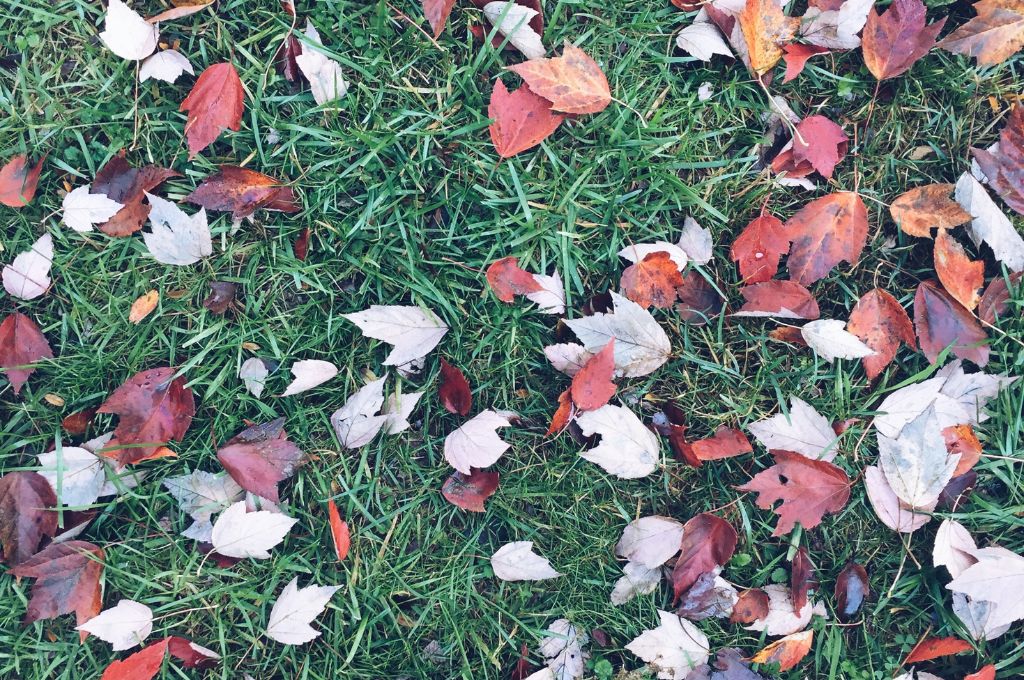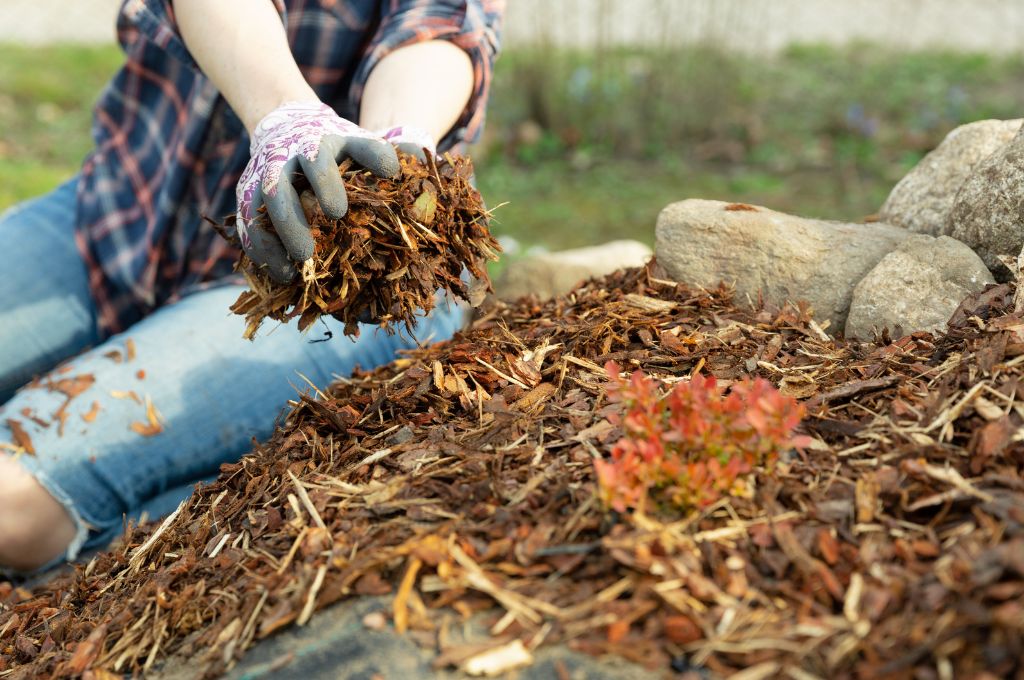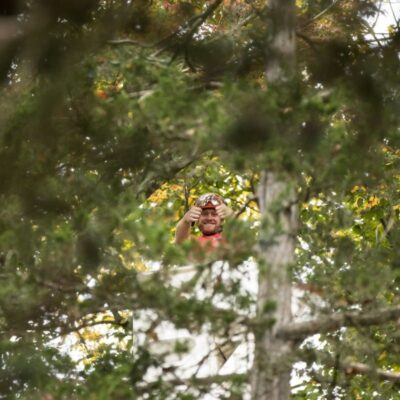As the vibrant colors of autumn paint the Massachusetts landscape, it’s a beautiful time to enjoy the outdoors. But it’s also a great opportunity to give your trees some much-needed care. While admiring the foliage, take a moment to assess your trees’ health and plan for the upcoming winter.
In this article, we’ll cover some fall tree care tasks you may want to complete between September and December. By completing these tasks, you’ll give your trees and yard the best opportunity to thrive in the coming year.
Key Takeaways
- Fall is the perfect time to plant new trees in your yard and allow their roots time to establish before the winter cold sets in.
- Fall tree pruning should include removing dead or damaged branches, as well as branches that interfere with structures.
- Rake up fallen leaves and branches. Compost them to create nutrient-rich soil, or run them over with a lawn mower to create a natural mulch that will feed your trees.
- Fall is a great time to add a layer of mulch around your trees or refresh the mulch you already have.
- If the fall is dry, water your trees deeply to help them stay hydrated.
Fall Tree Care Checklist
While many people look forward to cooler weather and Patriots football games in the fall, it’s important not to neglect your lawn and trees. Some essential fall tasks to keep your outdoor space healthy include:
- Planting new trees (fall is an excellent time to plant in Hopkinton and surrounding areas)
- Pruning (most) existing trees and shrubs
- Cleaning up fall debris or leaving it as a nutrient boost for trees
- Adding organic mulch
- Preparing your yard for colder temperatures
Plant New Trees This Fall
Many MetroWest homeowners think of spring as the time to plant, but many trees and shrubs tend to fare better when planted during the fall months. This is because it gives the roots time to grow underground before energy is needed to produce new growth in the spring. Just be sure to plant before the ground freezes!
WARNING: Tree planting is more than just dropping a tree in a hole. Failure to properly plant a tree can kill it or lead to girdling roots.
Schedule Fall Tree Pruning
Many property owners think that they need to wait until the leaves have fallen before scheduling fall pruning, but that is not the case. American Climbers can prune trees whether they have leaves or not.
Fall is a great time to prune trees that were damaged by summer storms or have weak branches that might break under the weight of snow. You can also use schedule professional pruning to improve access to driveways or walkways or to remove branches that are touching your roof or other structures
Be aware that fall pruning can sometimes stimulate new growth, which may not survive the cold winter months. If you’re unsure about the best time to prune your trees, contact us for a professional assessment.
PRO TIP: Interested in learning more about the benefits and timing of tree pruning? See some of our previous articles on the topic:
- When to Prune Your Shrubs
- Can You Do Tree Work in Winter in Massachusetts?
- Pruning or Trimming Tall & Large Trees: What’s the Big Deal?
- Crown Raising: Why Removing Lower Tree Branches Benefits MetroWest Homes
- Pruning Mistakes to Avoid [Poor Pruning Can Kill Your Trees]
- Tree Trimming FAQs: What You Need to Know About Trimming Trees

Keeping seed heads on some plants provides food sources for birds and other wildlife in Massachusetts
Clean Up Fall Debris
Fall cleanup is essential for keeping your property and trees healthy. By removing fallen leaves and debris, you can reduce the risk of insect infestations and fungal diseases. This also means you’ll need fewer harmful pesticides and fungicides, which is better for the environment and your wallet.
Other benefits of fall cleanup include:
- Removing leaves and debris that can harbor pests and diseases over the winter.
- Clearing planting areas for adding compost and mulch.
- Adding fresh material to your compost or leaf mold pile.
- Ensuring easy access to trees that need winter treatments.
Consider Leaving Leaves Alone
If your neighborhood allows it, consider the more natural approach of leaving fallen leaves on the ground. As leaves decompose, they provide trees with the nutrients they need to thrive.
Just be sure to run over them with a lawnmower to cut the leaves into smaller pieces to be used as mulch for your planting beds, trees, or garden. Otherwise, it will result in impenetrable mats of leaves that can kill your lawn and suffocate plants.
However, it’s important to note that leaves should only be used as natural mulch if none of your trees or shrubs are infested with any pests or diseases. You will only make matters worse by providing harmful insects, fungi, or bacteria with a safe, warm spot to spend the winter.
Add a Layer of Mulch
To keep your trees healthy during the winter, add a layer of organic mulch around the base of the tree, but make sure to keep it away from the trunk. This mulch acts as an insulator, protecting the tree’s roots from extreme temperature fluctuations. By preventing drastic temperature changes, you can help protect your tree’s delicate feeder roots from freezing. We recommend using organic mulch, such as wood chips. Apply it in a layer no more than three inches thick to provide insulation from winter cold and, if the winter is dry, to keep the soil moist and protected from drying winds.
PRO TIP: For more information on how to apply mulch around your trees, see our previous article on how to mulch trees in Massachusetts.
Refresh Your Existing Mulch in the Fall
If you already have a layer of mulch around your trees, fall is the perfect time to check if it needs refreshing. Organic mulch naturally decomposes over time. While this adds nutrients to your soil and is generally beneficial, it will also necessitate regular additions of new mulch.
In addition to adding mulch, check to see if winds and storms have not displaced your existing mulch and pushed it up against the trunk. If it is, carefully remove the mulch from around the tree’s root flare to allow it to dry out naturally.
Water Your Trees Before the Ground Freezes
Depending on how much rainfall you’ve received lately, your trees may need a long, deep drink of water before winter arrives. Young trees, in particular, have small root systems and will require irrigation to expand their roots into the soil. If you’ve planted trees or shrubs in the last two years, give them an extra drink this fall.
Watering long and deep is vital. Set a soaker hose to a slow trickle for several hours (placed at the drip line of the tree, not the trunk) to ensure water gets down to the tree’s root zone without running off.
Older, established trees may need water before the colder months, especially if the weather has been drier than average.
Prepare for Colder Temperatures
While adding organic mulch is one way to protect your trees from winter’s cold embrace, you may need to do more, especially if you have sensitive or non-native plants.
Young trees and some broadleaf evergreens can benefit from being wrapped in burlap, especially if they are exposed to road salt from nearby highways.
Wrapping can also prevent deer from eating your shrubs, plants, and trees. Even the best deer repellents won’t keep hungry deer away in winter, but burlap wrapping will.
American Climbers Can Help You Complete Your Fall Tree Care Checklist
Caring for your trees in autumn can pay big dividends in the next year. By pruning out deadwood, refreshing your mulch, preparing your trees for colder temperatures, watering trees, and removing fall debris, you can leave your trees as healthy and stress-free as possible heading into the winter.
If you need assistance getting your trees ready for winter, the team at American Climbers can help. Call us today at 508-497-8628 or request a quote online for tree work.
Blog Topics
Recent Posts
What's Happening? Stay Informed!
Stay on top of local events, pest and disease updates, tree and landscape tips, and more. Delivered straight to your inbox each month.











